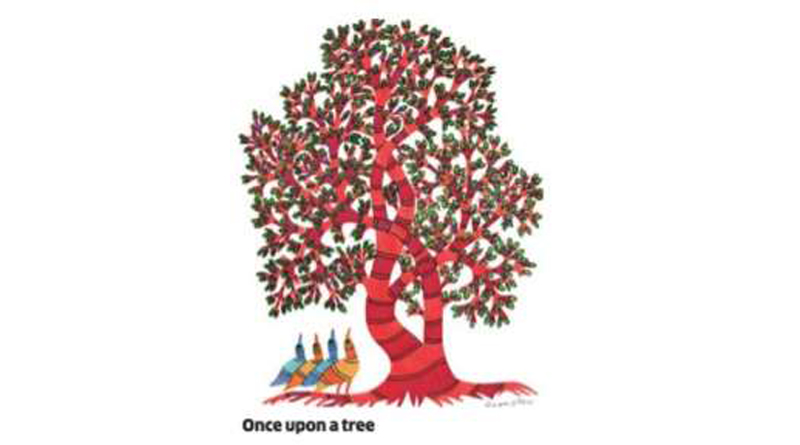Some activists say econom ic development and modernisation are disastrous for tribals.Many tribals, simple and heart-warming, look more civilised than city folk. Trying to modernise tribals can look like “Savaging the Civilised“, to use Ram Guha\’s phrase.Yet, tribals need to be brought, with care and sensitivity , into the mainstream, and not treated as a separate species. Independent India has treated them dreadfully . Many projects have been disasters for them. But other examples show mainstreaming is possible with limited trauma.
Dam If You Do, Dam If Not
Neeraj Kaushal of Columbia University and I have researched tribals ousted by the Sardar Sarovar Dam.Comparing oustee households with those still in the forest, we found that, far from being decimated by modernisation, tribals can adjust quickly and flourish.
The research data showed in a recent Swaminomics column (`Why many tribals don\’t mind being ousted by dams\’, goo.gl4bg4pw) that the oustees were far better off in material ter ms(TVs, mobikes, pukka houses, school access, electricity) than a comparable forest group -their former neighbours in semi-evacuated villages above the reservoir waters.
But forget material goods, what about the impact on traditions and culture? The World Bank\’s Morse Commission echoed the claim of activists that tribals would fail to handle commercial life, would be duped into losing their land and compensation, and end up penniless.
Our survey shows this is a myth.Comparing resettled with semi-evacuated villages, land ownership for self-cultivation is 83% versus 65%; for tenant cultivation is 3% versus 2%; and landless or marginal farmers working as agricultural labourers is 4% against 23%.
Several oustees have leased land from Patels for cultivation, 25 acres in one case. Some oustees lease out poor-quality land and work as labourers. Some have found new vocations.Interviews revealed one oustee owning several dhabas and two operating commercial threshers, charging fees from Patel clients.
Earlier researchers reported damaging impacts of resettlement on religious practices, traditional customs and social status. But today , 60% of oustees say resettlement did not affect their religious practices; 56% say their traditional customs and rituals remain unaffected; and 58% say their social status is unchanged. Tribal culture and traditions are resilient, changing but not erased.
Forest tribals grow mostly rainfed coarse grain and dal for self-consumption. Activists feared the oustees would fail to adapt to new crops and techniques. In interviews, ouste es said it took just one or two years to learn to grow irrigated paddy and cotton. No wonder their living standards shot up.
Cellphone ownership, the epitome of modernisation, was 88% for oustees versus 59% in the semi-evacuated forest villages. Tractor ownership was 7% versus 2%. Cellphones and tractorsare penetrating even forest villages.
Despite better material conditions, 54% of oustees said they would rather return to the same land they once occupied in the forest, proving that attachment to ancestral land and can be more important than TVs and mobikes. But 56% of those under 40 years opposed return.
Never Over the Hill
We asked two groups of tribals in the forest whether they would like to be ousted and get the resettlement package: 52% and 31% respectively wanted to quit the forest and be resettled.
This may surprise those who have read only Medha Patkar, Vandana Shiva or Arundhati Roy . Instead, please read “Caste in a Different Mould: Understanding the Discrimination“ by R K Shukla, Sunil Jain and Preeti Kakkar. Using national survey data, they found that while over one-third of tribals were in the bottom income quintile, no less than 11% were in the top quintile. Tribals in hill states earn well above the national average. Education and infrastructure have enabled hill tribals, many of whom in colonial times were hunter-gatherers and jhum cultivators, to leapfrog into modernity with minimal trauma.The same is possible in central India.Unfortunately , it is thwarted currently by state-Maoist civil war.
Indian tribals span a wide spectrum, from affluent foreign-educated ones to hunter-gatherers in loincloths. Too often, activists focus only on the least developed tribals, which is misleading. Many of those near the Sardar Sarovar Dam have cellphones and motorcycles, and can download their land titles from internet cafés.
The Supreme Court recently declared bamboo to be a grass, not timber, and, hence, by law, belonging to tribals and not the government. Some tribals in Gujarat have banded together to become bamboo suppliers to paper mills. Aided by NGOs, the first year\’s bamboo supply yielded ` . 12 crore in wages and net profits of ` . 6.5 crore, which the panchayat will recycle into forestry . These are capable, modernising people.
All humans were tribals for 99.9% of their history . Some of us came out of the forest a few hundred or thousand years ago, a tiny period on the evolutionary scale. Those left behind are not museum pieces to be preserved.They can catch up, given empowerment and access to modern facilities.
For too long, our laws expropriated tribals and facilitated their exploitation by contractors and petty officials. Recent laws have given tribals land rights, bamboo rights, a share in mine profits and the right to approve mining projects. Implementation remains weak. But our research proves that, given the will, much can be done quickly .


